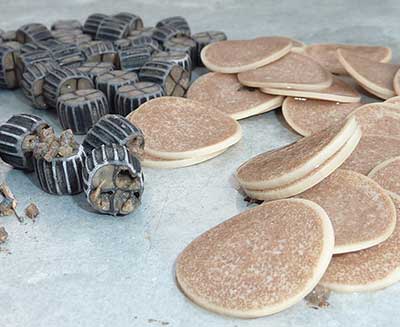Moving Bed Biofilm Reactor (MBBR) Carrier Media Case Study
When designing and planning a successful operation of the MBBR system within your wastewater treatment plant a very important consideration is the biofilm carrier to be utilized. Carrier based biofilm technology has been developed since at least the 19th century. However, in the last few decades, a myriad of options has been marketed.
To aid in the decision-making process we will attempt to break this analysis of biofilm media types into the following areas of consideration.
- Performance, required biodegradation rates
- Design, shape
- Stability, wear resistance
- Clogging, maintenance
Performance and required biodegradation rates
An important first step is to specify and determine the required biodegradation rates for your system. This will allow for the calculation of the required amount of carrier material. The following conditions need to be considered to accurately make these calculations.
- Operation related fluctuations in the pollutant concentrations in the wastewater
- Influent and effluent conditions
- Any possible toxic contaminants
- Design temperature
- Minimum temperature required for effective biological/biochemical metabolism
A common criterion used to choose an appropriate biofilm carrier and the amount needed is the “active surface area”. The active surface area is a good indicator for the biodegradation performance of the carrier media. It is, however, very important to understand the specification of the biodegradation performance must be calculated in kg [pollutant] per m3 [carrier media] per day. This allows for calculation of the COD/BOD or nitrogen load to be removed. In summary, this is the only way to accurately calculate the required quantity of carrier media and the price related to the biodegradation efficiency per day.
Design and shape of the media
The type and density of material used in the carrier media is essential when planning your implementation of your MBBR system. The plastic carriers offered in the market are usually made of (polyethylene [PE]) virgin material or of more affordable re-granulates (recycled material).
Re-granulates
Virgin polyethylene
Stability, wear resistance
The next consideration is the choice between a dimensionally stable molded (PE or PP) extruded carrier or a mechanically stressable (i.e. flexible) material. Dimensionally stable carriers often possess the disadvantage of breaking even at small mechanical stress levels. Furthermore, they get increasingly abraded which is due to their stiffness being stressed by kinetic energy within the MBBR. Fractures at the bridges of the carriers are hence not unusual as shown below.

Right: Our mechanically flexible MBBR BioChip showing no wear of fracturing
Clogging, maintenance
Summary
In addition to the performance, shape, stability, wear resistance, plasticizers and their possible impacts it is important to choose a company that can provide professional support for the entire design, build, implementation and ongoing maintenance/support of your MBBR system. With experience in all aspects of the treatment of wastewater from a wide variety of industries using MBBR technology we at Ecologix would love to discuss your next project with you today.

